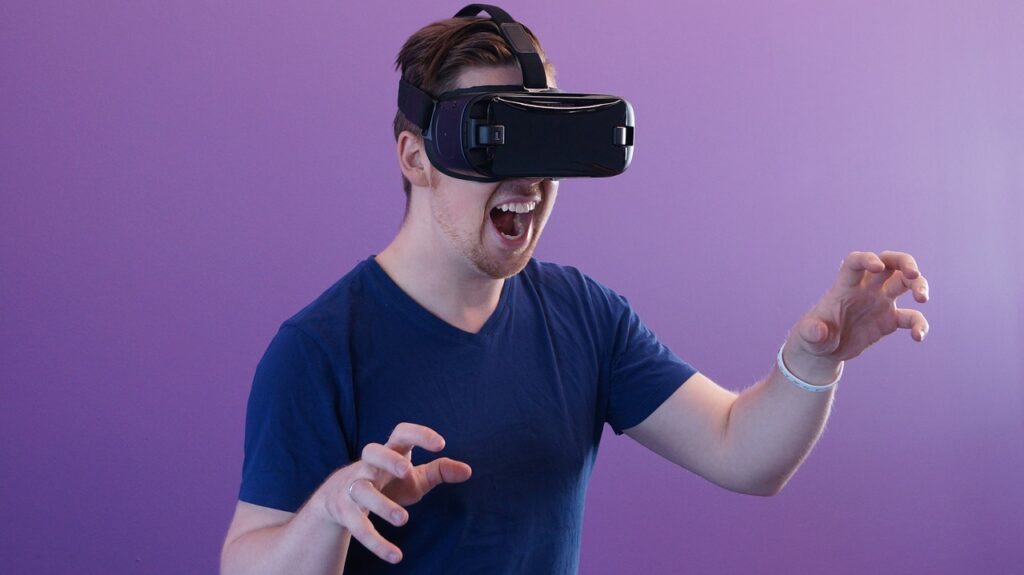Virtual reality is well out of the domain of science fiction in 2020. VR games are booming, the quality of virtual experiences is improving with the speed of light, and the whole industry expects to be on the rise in the coming years. Yet, VR is still secluded enough for people to lack a clear understanding of how it can transform the world of technology on a large scope.
What is WebVR and Why is It So Useful?
Contents
The emergence of virtual reality and WebVR, in particular, impacts how technology is expected to operate. Currently, having access to the Internet, as well as the ability to watch videos, read books, order food, edit photos, and communicate with other people via various technologies is a norm for an enormous number of people. Almost 2.26 billion people worldwide use Facebook services daily. Around 3.4 billion people use the Internet every day. And approximately 640,000 people daily go online for the first time in their lives.
The last point vividly demonstrates why things that used to be a novelty in the past are now not only widely available but essential to our user experience with technology. Virtual reality is still in its infancy, but it is likely to become irreplaceable in many technological solutions in the future.
WebVR shows the most promise in going viral because it combines two huge trends in the evolution of technology: virtual reality and moving everything to the cloud. Before WebVR was a thing, developers could only build applications tailored to specific hardware. Virtual reality remained primarily the commodity of video game productions and required people to obtain specific headsets to experience it.
WebVR makes virtual reality accessible through a browser. When streamed through a headset, it produces a fully interactive environment. Viewed simply on the screen, it can provide a 360 view of a picture or video. In the future, WebVR can be incorporated in educational sessions to supplement the virtual classroom, in business meetings that need many people to have access to the same application, and in employee training programs.
How Do You Actually Build a WebVR Application?
WebVR is possible because of a JavaScript API that had carried the same name until 2018. The project was then renamed to WebXR Device API, and many elements of its functionality were largely improved and expanded. As an API, WebXR is currently unique, and the term WebVR is now used more frequently to refer to the concept of virtual reality applications being accessible on the web.
To build a WebVR application, developers use various frameworks that interact with the API and allow them to create cross-platform programs. Below is a brief overview of these tools. A more detailed comparison of each of them and how WebVR is practically created can be read here.
React 360
React 360 is a framework built on top of a popular JavaScript library with the same name that allows the creation of 3D and virtual reality environments. Developers primarily use React 360 to enhance user interfaces and build more immersive interactive applications. The technology is suitable for creating stunningly detailed tours of property and retail stores, as well as educational and entertainment videos that are displayed directly in the browser without a headset.
A-frame
A-frame is a framework more focused on being multifunctional. It allows developers to create varied VR applications, including games, apps, and separate scenes and elements in a virtual environment. It is the most effective when used in projects that will run in headsets through a browser.
Three.js
Three.js is a more low-level library that enables developers to dive deeper into 3D rendering and modify more elements to better suit their needs. Generally, Three.js requires more specific knowledge than React 360 and A-frame. The library trades the ease of use for immense control and customization abilities. Operating Three.js directly rather than through other frameworks allows developers to build highly detailed and textured 3D objects that can be updated separately and inserted into any VR scene.
Argon.js
Argon.js is a library designed to promote and enhance the development of augmented reality (AR) applications for the web and mobile platforms. The AR sector on the web is still relatively small since its required functionality and features are not yet widely incorporated. Argon.js strives to remedy that by allowing developers to build web-based applications that combine 3D and 2D content, a user’s view of the real world, and spatialized audio.
An Overview of the Impact of WebVR
The WebVR technology that is already growing is soon likely to bloom. By itself, VR is incredibly useful in every imaginable field, from business to education and entertainment. WebVR is particularly probable to present significant applications and extend the capabilities of already existing technologies. Being highly accessible and cross-platform, WebVR can become the new norm of how videos, pictures, virtual tours, and online meetings should function.

